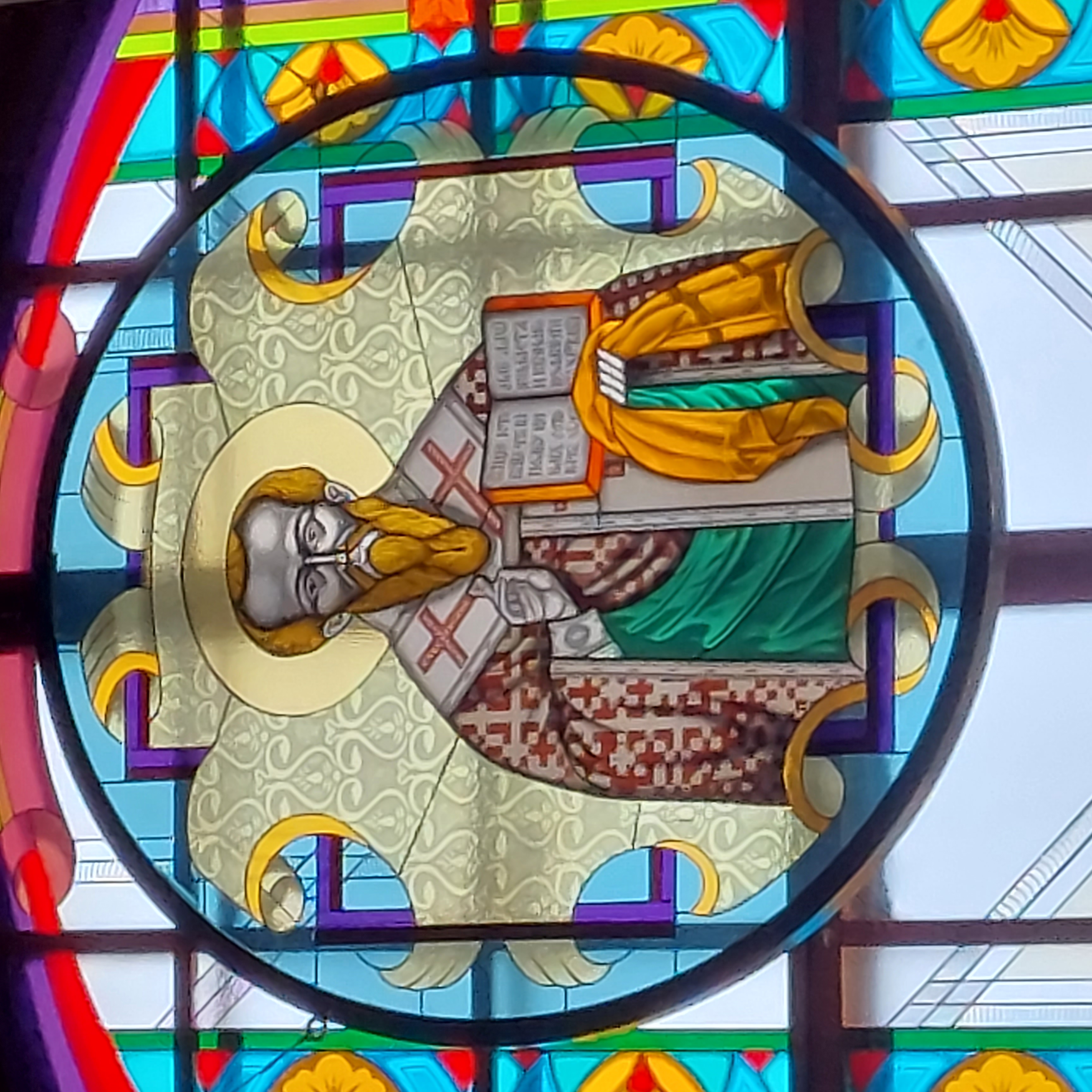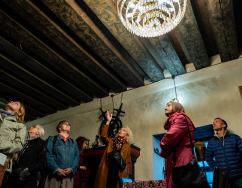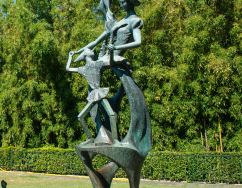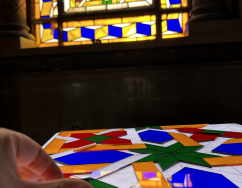European Heritage Days Article:
Unity in Diversity: How Lithuania Celebrated European Heritage Days 2024
European Heritage Days Article:
Unity in Diversity: How Lithuania Celebrated European Heritage Days 2024
Karaim Culture in Trakai: A Living Legacy
Among the most compelling features of this year’s program was the celebration of the Karaim (Karaite) community, one of Lithuania’s oldest and smallest ethnic and religious minorities. Numbering around 200 individuals today, the Karaims trace their roots to Turkic-speaking followers of Karaism, a faith grounded in the Old Testament, distinct from Rabbinic Judaism.
The Karaim presence in Lithuania dates back to the late 14th century, when Grand Duke Vytautas brought Karaim families from Crimea to settle in Trakai. This was part of a broader effort to fortify the region, stimulate trade, and integrate skilled communities into the Grand Duchy. Over time, the Karaims were granted self-governing rights under Magdeburg Law, with their elected leader, the Vaitas, reporting directly to the Lithuanian ruler. Though smaller communities also emerged in Biržai, Pasvalys, and Naujamiestis, Trakai remained the administrative and spiritual heart of Karaim life.
A highlight of the 2024 events was the public programming in Trakai, where visitors explored the Karaim Ethnographic Museum, viewed traditional kenesas (temples), and attended performances featuring traditional music and dance. Particular attention was given to the Karaim language, classified by UNESCO as endangered. Still spoken in Trakai, this dialect of the West Kipchak Turkic family remains central to community identity and continues to be used in religious services and traditional ceremonies.
The community’s contributions to theology, science, military service, and culinary arts—including the famed kibinai pastries—were also celebrated, offering a glimpse into how a small community has left an outsized imprint on Lithuania’s cultural landscape.
A Tapestry of Minority Cultures: Jewish, Tatar, and Old Believer Heritage
Across Lithuania, the 2024 EHD program provided a broad platform for showcasing the contributions of other national minorities. A standout aspect of this year’s schedule was the synergy between European Heritage Days and the European Days of Jewish Culture, which coincided in early September.
Celebrating Jewish Life
In Šiauliai, the Chaim Frenkel Villa-Museum hosted a multi-sensory event titled “The Joys and Rules of the Sabbath,” offering attendees a deep dive into Jewish symbolism, art, and religious tradition. Visitors engaged in the “Mizrah – Paper Carving Studio” and viewed a stunning exhibition by Klaidas Navickas, whose intricate carvings revived Jewish allegorical art.
In Švėkšna, the Šilutė Hugo Scheu Museum presented “Gekumen” (Yiddish for “returned”), an immersive musical-theatrical performance by Vilnius’s Old Arts Studio. Using drama, historical narrative, and street theatre, the show resurrected the lives of Jewish individuals in interwar Lithuania—stories of love, loss, resilience, and identity.
Remembering the Tatars
The Tatar community, with a presence in Lithuania dating back to the 13th–14th centuries, also took center stage. In Raižiai, often called Lithuania’s “Tatar capital,” events like “Tatars Around Us” and the guided walk “Two Nations – One History” drew connections between Lithuanian and Tatar histories. Participants explored how the Tatars—initially invited by Grand Dukes like Vytautas the Great—became not just military allies but integral members of Lithuanian society.
The celebrations included culinary showcases, most notably the traditional šimtalapis—a hundred-layer cake beloved by both Tatars and Lithuanians. Alongside food and festivities, deeper conversations emerged around restoration and memory. The EHD spotlighted the recent installation of stone stelae commemorating 12 desecrated Tatar cemeteries, with locations spanning from Vilnius to Punia Eldership. A commemorative plaque on the outer wall of Lukiškės Prison in Vilnius, built over a historic Tatar burial site, served as a sobering reminder of the Soviet-era erasure of minority histories.
Spotlight on the Old Believers
In Daniliškės, Trakai District, EHD attendees visited the newly renovated St. Trinity Orthodox Church, home to Lithuania’s Old Believer community. Descended from 17th-century Russian Orthodox dissenters who fled persecution, the Old Believers have preserved their distinct rituals and iconography across generations. Visitors learned about their traditional liturgy, architecture, and historical endurance in the face of political suppression and social marginalization.
Lithuania and Ukraine: A Shared Spiritual and Cultural Bond

Perhaps the most historically poignant event took place at Vilnius’s Holy Trinity Greek Catholic (Uniate) Church, where Lithuania and Ukraine’s intertwined spiritual heritage was honored through stained glass, lectures, and academic programming.
In a public talk, Dr. Genė Kirkienė of Vilnius University unveiled a new stained-glass window series chronicling key figures from the Grand Duchy of Lithuania’s religious past. Subjects included Saint Basil the Great, the Orthodox martyrs of Vilnius, and Metropolitan Joseph Benjamin Rutsky of Kyiv. A planned window will depict Prince Konstantyn Ostrozky, who founded the Holy Trinity Church after the Battle of Orsha in 1514.
Central to the program was the commemoration of St. Josaphat Kuntsevych (1580–1623)—a martyr for church unity whose life and legacy embody the shared religious narratives of Lithuania, Ukraine, and Belarus. Born in modern-day Ukraine, Josaphat served for over two decades in Vilnius and played a pivotal role in promoting the Union of Brest, which sought communion between the Eastern Orthodox and Roman Catholic Churches.
His martyrdom in Vitebsk and eventual canonization by the Vatican in 1867 have made him a symbol of spiritual resistance and unity. In today’s geopolitical context—particularly amid Russia’s ongoing war against Ukraine—his legacy speaks volumes about the enduring struggle for religious and national independence.
An international conference titled “Josaphat Kuntsevych: History, Legacy, Memory”, held in collaboration with the Catholic University of Ukraine and Kyiv Christianity Research Program, deepened this reflection. Exhibitions at Vilnius University Library showcased Josaphat’s vestments and religious artifacts, while the restored original church floor—buried during the Soviet era—was revealed as a symbol of spiritual reclamation.
The 2024 European Heritage Days in Lithuania stood as a profound affirmation of cultural plurality. It wasn’t just a celebration of identity—it was a testament to survival, continuity, and mutual respect.
As Lithuania continues to embrace its multicultural legacy in 2025 and beyond, the voices heard during these days—the Karaim scholar, the Tatar guide, the Jewish artist, the Ukrainian historian—serve as living reminders of how the nation’s strength lies in its diversity.
This article was produced in collaboration with the Ministry of Culture of the Republic of Lithuania.


